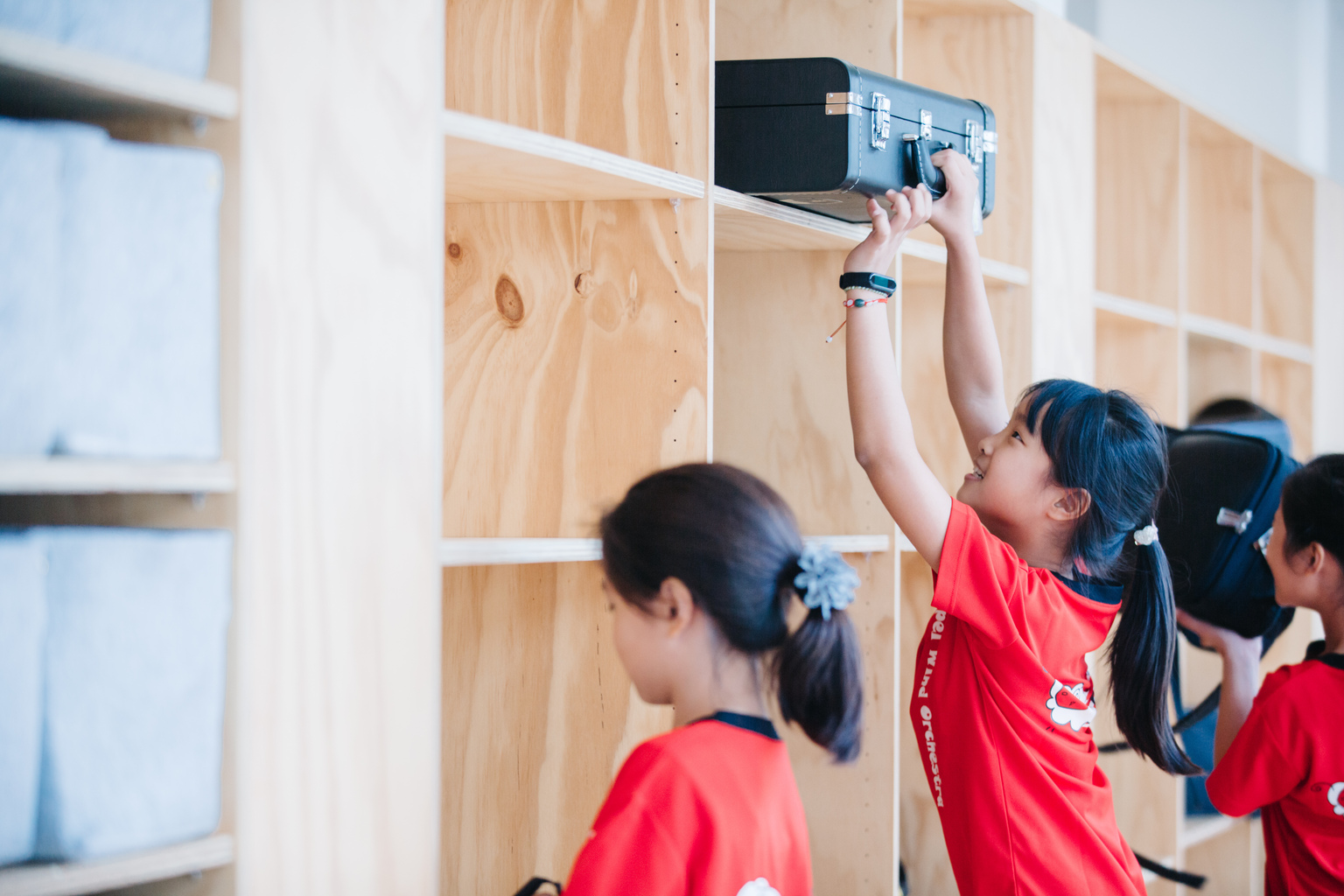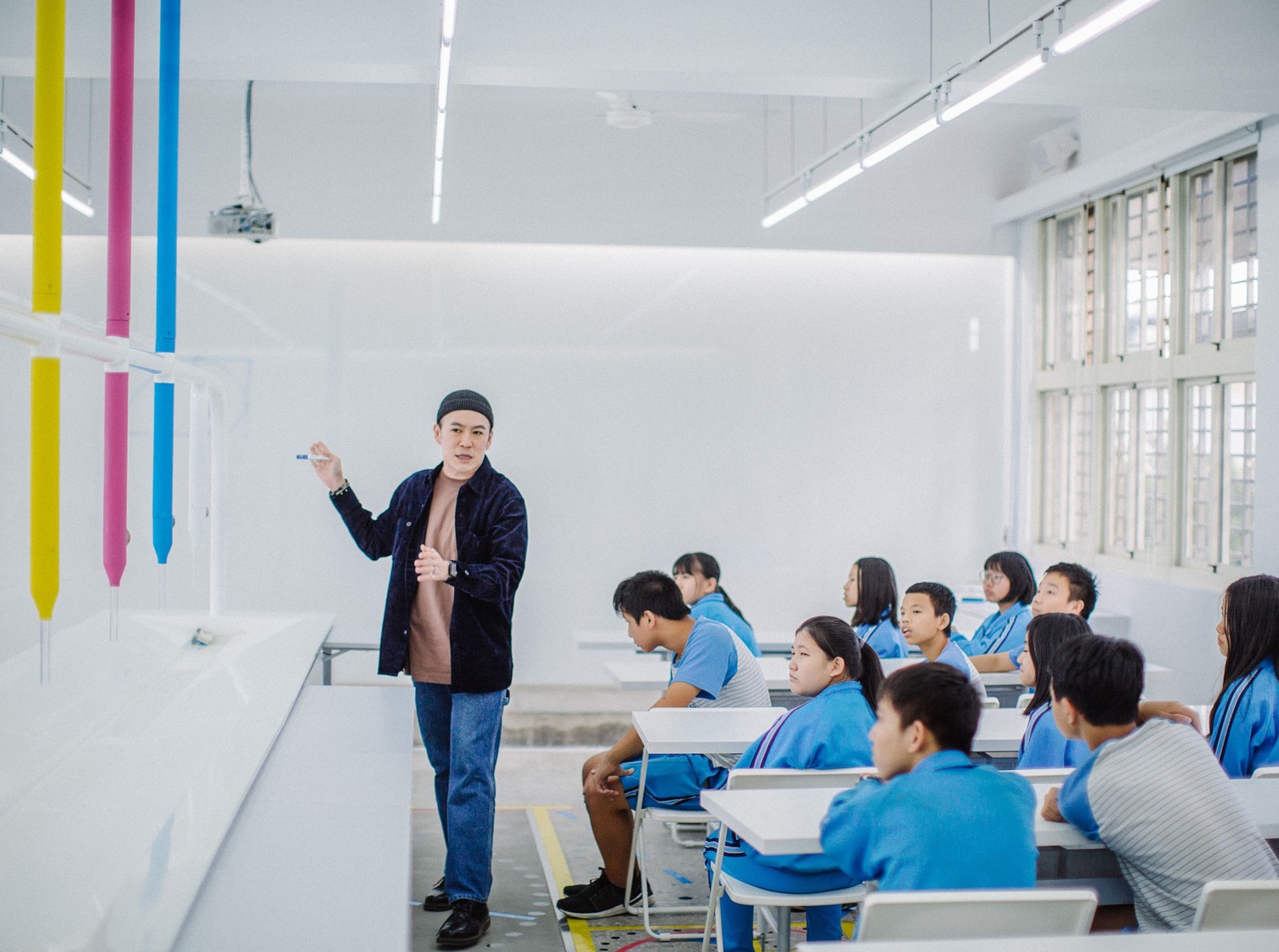Not Just Changing the Space, but also Changing the Perspectives on School
-Exclusive Interview with General Affairs Director Chen Chen-Chieh of Chiapei Elementary School
“This campus improvement was nothing like what I thought,” said General Affairs Director Chen Chen-chieh of Chiayi City Chiapei Elementary School. “At first, I thought it was just a physical construction, but I did not expect that we began to look at our campus from a different perspective.”

One Band Classroom Igniting Changes in Space and Thinking
This journey beyond “expectations” started from 2020. At the time, Chiapei Elementary School Band had gradually developed a reputation over the previous few years. The band class, which previously had difficulties recruiting students, became much sought after. Success with recruitment was obviously a good thing, but with increasing number of students, instruments, and random objects, the classroom was growingly crowded and messy, and the congested space became a new problem that bothered the teachers and students.
Just when they were troubled by this problem, Mr. Wu Chia-lang, the conductor of the band class, inadvertently came across “Design Movement on Campus” executed by TDRI under the commission of Ministry of Education. After discussion with the faculty members, Ms. Chen Chen-chieh was put in charge of submitting an application, hoping to use the opportunity to renovate one classroom, so that students and teachers no longer needed to cram into the classroom where they had trouble even walking.
Chiapei Elementary School was successfully selected to “Design Movement on Campus,” owing to great efforts by the school. At first, they thought they just needed to wait for the design team to design according to their needs and carry out the construction, but they did not expect that, through brainstorming by TDRI, advisor, and the design team “Nano Lucky Interior Design,” they would embark on a journey of changes in space and thinking.


Classroom Renovation Is also Reformation of Children’s User Habits
The first step of this journey was to decide a destination. “Actually, when we first submitted the application, we hoped that the band classroom could also be used as a performance space, and we also needed teachers’ office,” recalled Chen. The school originally wanted to give the space diverse functions, but that objective may cause the space to end up “good for nothing.” Eventually, through discussion by all three parties, the space’s main functions of practice and performance were confirmed.
With the functions confirmed, it was another round of contemplation and sorting out ideas regarding the building materials. “At education sites, we have the most direct observation on children’s behavior. That is why we believed that, when choosing building materials of the classroom, our priorities were ease of maintenance and durability.” Following that train of thought, the top choice for lighting was obviously the bright LED lights; to avoid children pulling curtains, the best way was to remove curtains all together; as for wooden floor that was hard to care for, it was definitely a big no-no. Through their exchange of ideas, the school began to consider: why not use this opportunity to teach children how to properly use and treasure the classroom, rather than limiting and subtracting the design to cater to children’s habits? “Originally, we thought classrooms were ‘just like this,’ and could ‘only be like this;’ but through this cooperation, we began to break own framework of thinking, and look at school from new perspectives.”


Second-Generation Construction Workers from Chiayi Lead Children to Participate in the Renovation
Not only did the teachers take on new perspectives on classroom design, as the most important users of the space, the children in the band class were also involved in the process. Nano Lucky Interior Design is a local design team in Chiayi, and when they designed the space for the hometown elementary school, the team invited second-generation construction workers in Chiayi to lead the children to build the space they were going to use with their own hands, so that children could learn the expertise of local professionals as they experienced the design process. When they assembled and painted chairs, the children discovered “wood is fragrant!” or “assembling parts is hard!” Through this process, the children learned that “champions in every trade” was not just some preaching in the textbook, but something they could relate to. “Nano Lucky Interior Design invited second-generation construction workers to come to the campus, which not only ignited the children’s imaginations for professions, but also allowed them to learn the challenges and sense of achievement in these professions through interaction with the workers.”
As Nano Lucky Interior Design, the second-generation workers, and the children worked on the classroom renovation a step at a time, the band classroom was lined with warm wooden floor, with stickers labeling the positions of large musical instruments during rehearsal (Home of Instrument); the backstage is turned into a storage space, where various instruments and teaching tools are placed; the retractable stage makes the space more versatile; the curtains that drop all the way down to the floor not only soften the spatial ambience, but also act as sound proof pads…Today, the band classroom that breaks all the “conventions of classroom building materials” is not just a space for practice, but also the venue for graduation concert and percussion performances. When alumni return, they are often left in awe by the changes of the space, and their praises make the children involved even more proud.
However, from a teacher’s perspective, it is a one thing that the children are proud of the classroom, but the forming of habits is another. “To tell the truth, students still often forget to take care of the wooden floor or store their instruments properly. Teachers have to constantly remind them. However, with repeated reminding, fewer and fewer children forget, and the frequency has also dipped. This is how habits are formed,” smiled Chen. “This is not just a renovation of band classroom, this is a change of thinking and habit. To the teachers and children, the whole process was a great experience.”




